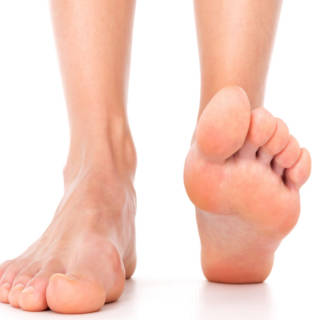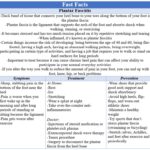Why is your foot hurting?
You wake up one morning and notice you have a sharp pain in the bottom of your foot. As you make your way to the bathroom to get ready for work, you realize the pain is starting to ease up and eventually goes away. You assume it was a cramp and don’t think about it until the following morning when it happens again. What’s causing your foot to do this? How can you stop it? Are there ways to prevent it?
 Definition
Definition
The thick band of tissue that connects your heel bone to your toes along the bottom of your foot is called the plantar fascia. The plantar fascia is the ligament that supports the arch of your foot and absorbs shock when you’re walking, running, or exercising. When it becomes stressed and has too much tension placed on it by repetitive stretching and tearing, it can become inflamed, known as plantar fasciitis.
Certain things can increase your risk of developing plantar fasciitis. You don’t have any control over some of them, like being between the age of 40 and 60 (it’s more common among this age range), being flat-footed, having a high arch, or having an abnormal walking pattern. Other risk factors are more under your control, such as being overweight (which adds extra stress to the plantar fascia) and the type of activities you participate in (especially those that include running or jumping exercises). Also, the kind of job you have plays a role since those that require walking or standing on hard surfaces for long periods can cause damage to your plantar fascia.
The main symptom of plantar fasciitis is a sharp, stabbing pain in the bottom of your foot near your heel. Typically, this pain is worse when you first wake up in the morning and after long periods of standing or sitting because the ligament contracts. The pain comes from stretching it out. For some individuals, the pain gets worse after they exercise.
Treatment
The treatment for plantar fasciitis involves resting, icing, and stretching the area. It can take several months to get complete relief. Resting the area means avoiding any activities that will aggravate your plantar fascia. Icing the area three to four times daily for 15 to 20 minutes can help reduce pain and inflammation. Also, applying ice after an activity is beneficial.
Gentle stretching exercises can help the plantar fascia to gradually release. It’s crucial to stretch not only your plantar fascia but your Achilles tendon and calf muscles because these pull on your foot. Another way to stretch your calf and arch is to wear a splint while sleeping. The splint keeps your foot in a flexed position, which helps to lengthen and stretch the plantar fascia gently. By wearing it overnight, you help to decrease the pain that you have upon waking.
Sometimes, taking over-the-counter anti-inflammatories, such as ibuprofen or naproxen, will help reduce inflammation and pain. Verify that these won’t interfere with your medicines or other medical conditions before taking them.
Sometimes, these conservative, at-home approaches don’t work. Some people need to have injections of steroid medication or platelet-rich plasma into the plantar fascia to reduce inflammation. It’s important to note that multiple injections of steroids aren’t recommended because they can weaken the tissue, which increases your chances of having the ligament rupture.
For chronic plantar fasciitis, some people try extracorporeal shock wave therapy, which uses sound waves to help stimulate healing. Another option is the Tenex procedure, which is minimally invasive and removes the scar tissue. In severe cases when all other treatment options have failed, some people have surgery to disconnect the plantar fascia from their heel bone.
It’s important to treat plantar fasciitis because if you don’t, you can have chronic heel pain, affecting your ability to participate in your normal everyday activities. Also, if you alter how you walk to reduce the pain in your foot, you can end up with foot, knee, hip, or back problems.
Prevention
The best way to not have to deal with plantar fasciitis is to prevent it. There are several things that you can do to minimize your risk. The first is to wear shoes that provide good arch support and shock absorbency. Avoid high heels, flip-flops, and worn-out athletic shoes. It’s vital to maintain a healthy weight. If you’re into sports that impact your plantar fascia, like walking or running, consider mixing it up and trying other sports that don’t, such as swimming or bicycling. Remember to stretch your calves, Achilles, and feet when you’re done exercising. It can also be helpful to stretch them periodically throughout the day if you spend a great deal of time sitting or standing for work.
Plantar fasciitis isn’t pleasant to experience, but there are ways to improve it and prevent it from occurring. If you have any questions or concerns, please speak with your doctor. If you would like more information, please visit the American Academy of Orthopaedic Surgeons’ Plantar Fasciitis page at https://orthoinfo.aaos.org/en/diseases–conditions/plantar-fasciitis-and-bone-spurs